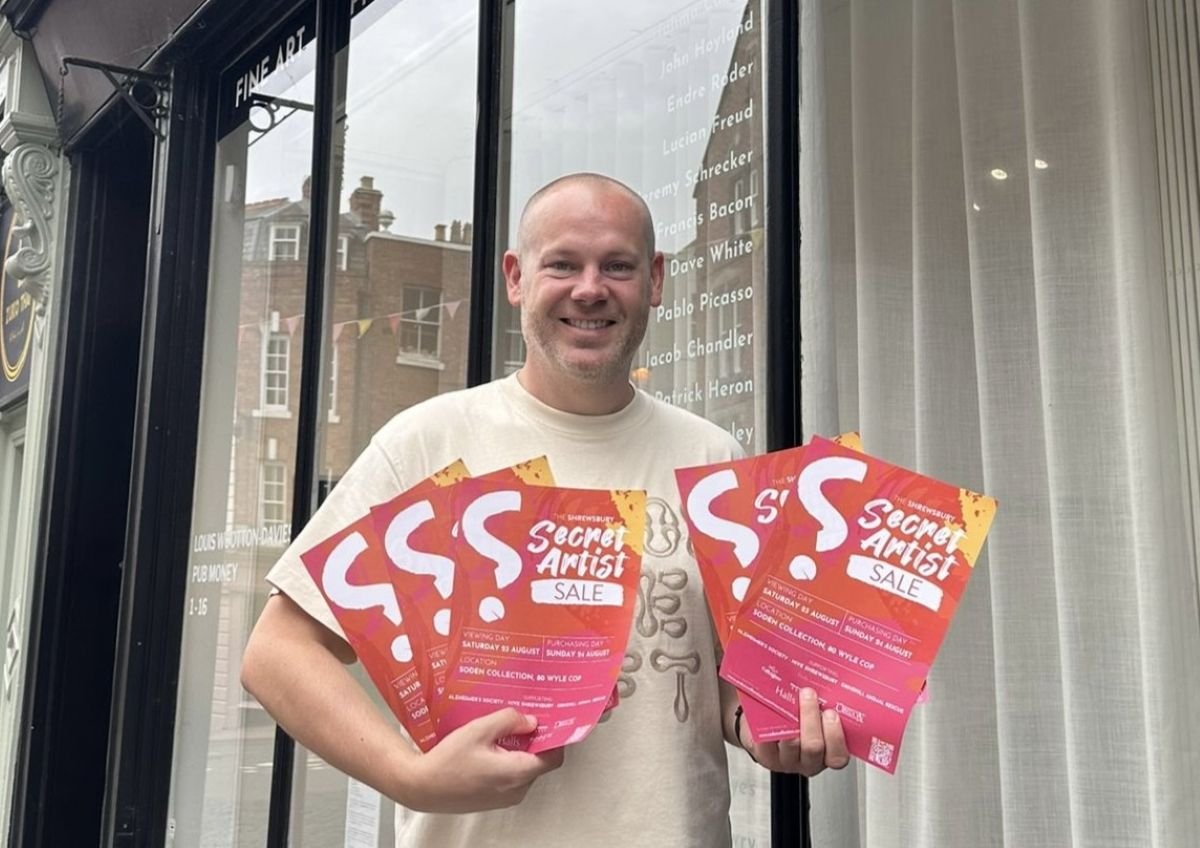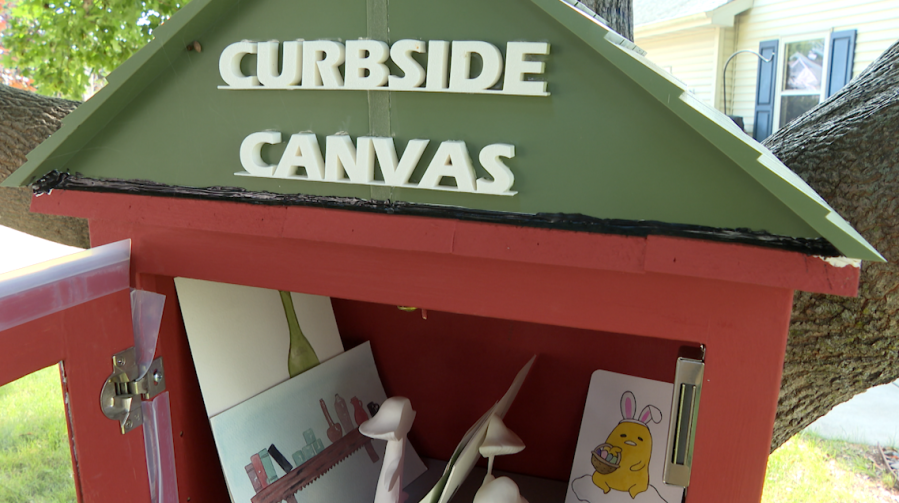In a 1962 interview with art historian Katharine Kuh, Edward Hopper remarked that he didn’t intend his iconic painting Nighthawks (1942) to be a particularly lonely work. He conceded, however, that “Unconsciously, probably, I was painting the loneliness of a large city.” As if simmering beneath the surface, this quiet solitude inherent in city life pervades Hopper’s vision of America, from the silent couple in Chop Suey (1929) or the late-night paper-pushers in Office at Night (1940).
Today, many contemporary artists are depicting city scenes from a similarly watchful point of view, embodying the model of the flâneur—an urban observer leisurely strolling through the city, taking in the sights without becoming an active participant. Skylines, in these contemporary works, tower and glow, occasionally illuminating or overshadowing pedestrians, while passersby—often faceless—stroll the city streets. Moreover, in the digital age, smartphones are everywhere, and contemporary artists portray what any observer in New York, London, or Paris might see: people navigating the concrete expanses alone, absorbed in their tiny screens.
Here, we highlight eight contemporary artists whose works pause to take a closer look at city life.
B. 1995, Marblehead, Massachusetts. Lives and works in New York.
A recent MFA graduate from New York’s Hunter College, Sarah Cohen explores the quiet moments of the metropolis in her oil paintings. Drawing on personal photographs and experiences of both Boston and New York, Cohen’s work invites viewers to take a closer look at the mundane, rendered with rough brushstrokes and a keen attention to light and shadow. Everyday objects, like a street garbage can in Tribeca Trashcan (2023), are imbued with significance, singled out in her paintings.
Meanwhile, many of her cityscape paintings depict anonymous subjects—without clear facial features or turned away from the viewer. For example, Boy Group (2023) shows three boys on a street curb sharing an intimate moment in an otherwise desolate setting. This closeness amid isolation is typical of Cohen’s portrayals of introspection in the city she occupies.
Before her MFA, Cohen studied at Boston University, where she observed both coastal and metropolitan life. These two themes came together in her recent online solo exhibition, “Town & Country,” at Hyacinth Gallery. Her first in-person New York solo exhibition is scheduled to take place at the gallery in January 2025.
B. 1992, Helensburgh, Scotland. Lives and works in London.
In Thomas Cameron’s oil paintings, everyday scenes of city life unfold within “non-places,” as the artist put it, using the term coined by anthropologist Marc Augé. “These spaces have the effect of anonymizing and grouping those who inhabit them,” Cameron said in his artist statement. A man alone in a café in Pret (2024), two figures passing each other on the street in Passers By (2023), a crowd seen through the subway window in Commute (2023): Cameron captures these fleeting moments without ascribing too much context so that the viewer, too, can inhabit these spaces.
A recurring motif in his paintings is the cell phone, a symbol of modern solitude. His subjects, alone yet connected by their phones, are divorced from the city scenes around them as they stare into the bright screens. For instance, in Roses (2023), a man is shown on a city street with a bag of roses, engrossed by his phone.
An MA graduate in fine arts from the City and Guilds of London Art School, Cameron frequently shows with Canopy Collections and London-based nomadic gallery Taymour Grahne Projects, which hosted his solo exhibition “What Happens When Nothing Happens” in April.
B. 1936, Amstelveen, Netherlands. D. 2024, New York.
For much of his life in New York, Anton van Dalen maintained a pigeon coop atop his East Village apartment. After moving to the neighborhood in 1966, van Dalen spent his entire adult life documenting its transformation through surreal cityscapes and perhaps his most noteworthy series, the monochrome “Night Street Drawings.” These works, such as the graphite illustration Abandoned Car with Dog and TV (1977), take a closer look at the underrepresented, more dilapidated corners of city life.
Elsewhere, in Self-Portrait with Pigeon Coop Looking North (2014), van Dalen illustrated himself among his pigeons above the East Village, with the cityscape rendered in vibrant purples and yellows. Notably, the painting also features a colorless, run-down church building on the left margin, adding a poignant contrast to the changing city surroundings.
On June 25, 2024, van Dalen passed away in his East Village apartment at 86. His last solo exhibition, “Doves: Where They Live and Work,” was presented by P.P.O.W in 2022.
B. 1986, Zagreb, Croatia. Lives and works in New York.
Croatian artist Stipan Tadić sees himself as a firsthand observer of the forgotten hours of the city. “I really like this idea of witnessing,” Tadić said in an interview with Juxtapoz. “There’s New York, there’s me, it’s empty, and what can you do?…I really love working on things that are in the moment.”
His artwork often captures this spontaneous sensibility through his candid paintings of New York City nightlife. For example, Jesus Saves (2021) features a couple drinking outside a bar, their gazes catching the viewer as if suddenly aware of an intrusion, a serendipitous moment. Influenced by the drawing style of comics, his oil paintings blend graphic richness with a playful style reminiscent of the flattened imagery of 1980s animation.
His solo exhibition “Metropolis: 36 Views of New York” at James Fuentes, which ran in 2023, tackled city life in the spirit of Katsushika Hokusai’s woodblock-print series “Thirty-six Views of Mount Fuji.” This series of paintings emerged from a year-long walking tour across the city, following the D train line through every neighborhood from the Bronx to Coney Island. Tadić views New York City as a living, evolving landscape, much like Hokusai saw Mount Fuji.
B. 1990, Seoul. Lives and works in Seoul.
Once a book cover artist by profession, Seula Yi paints the concrete expanses of Seoul, New York, and Paris, where colossal buildings and skyscrapers tower over individuals. Her work often places these structures as the backdrop to her reflective portraits of women or within retreating cityscapes dotted with tiny figures navigating the vast metropolis. Her paintings emphasize the stark contrast in scale between the human figure and the urban environment.
For instance, City People (2021) captures 10 indistinct figures against a city block, symbolizing the anonymity often experienced in urban settings. Yet Seula portrays the city landscape with a sense of affection. For instance, her work Concrete Garden (2023) visualizes the city as a space brimming with potential for growth. This metaphorical garden reflects the architectural forms that mimic natural greenery, rising vertically across the skyline. While often devoid of greenery, her version of the cityscape is alive with human activity and architectural innovation.
Her work has been the subject of solo exhibitions at Slow Galerie in Paris and Gallery Afternoon in Seoul, as well as a book entitled Things in the City (2021), featuring 27 drawings and 65 paintings.
B. 1996, Wuxi, China. Lives and works in Hangzhou, China.
Smartphones command the attention of solitary figures in Zhaofeng Ye 叶兆丰’s somber urban paintings, where faceless characters often appear starkly isolated against severe cityscapes. In scenes like the dinner table in Gap – Party《隔阂 – 聚餐》 and a coffee shop in Gap – Living Space《隔阂 – 生活空间》 (both 2024), Ye compellingly conveys the alienation wrought by city crowds engrossed in their devices. His use of a muted color palette, highlighted by stark shadows, intensifies a sense of longing and the pervasive dread that looms over his city dwellers.
A notable departure from this technological focus is found in his 2023 painting Territory《领地》. This piece shows a scene of two young boys diving into a vibrant blue pool, an oasis set against the contrast of a dilapidated and blurred city backdrop. The pool is rendered in almost hyperrealistic detail, creating a striking juxtaposition with the surrounding urban decay.
Ye graduated from the China Academy of Art, where he now teaches. His most recent solo exhibition at Sens Gallery, “The Silent Fade of Everything,” closed on April 20th.
B. 1974, Abidjan, Ivory Coast. Lives and works in Abidjan.
Joana Choumali wakes up at 5 a.m. every morning to walk through her home city of Abidjan, Ivory Coast, capturing its awakening streets with her iPhone. These photographs are then printed onto canvas, where Choumali meticulously adorns them with multicolor threads and fabrics. This process transforms everyday city scenes into textured, layered artworks that blur the lines between photography and embroidery, making everyday scenes of the city streets glow with bright colors.
“I realized the morning is a blank page on which anything can be printed,” Choumali shared with the British Journal of Photography in 2020, a few months after becoming the first African artist to win the Prix Pictet photographer award. “The walks became a daily pilgrimage in my own home. I wanted to create an everyday embroidered diary of things that cannot be said.”
Her recent solo show “I am not lost, just wandering” at her gallery Sperone Westwater, which co-represents the artist with 193 Gallery and Loft Art Gallery, focuses on anonymous city dwellers caught in the iridescent glow of dawn. For example, in SUMMER WALKS (2024), she captures a group of girls who traverse the residential streets lined with apartment buildings, where pops of greenery and a dreamily accented sky lend a nostalgic, almost ethereal quality to the city. In these renderings, Abidjan comes alive as a city close to the artist’s heart.
B. 1996, London. Lives and works in London.
The 28-year-old British painter Cece Philips’s moonlit cityscapes place women, particularly women of color, at the center of the world. In these intimate works, she reimagines the figure of the flâneur, described by Charles Baudelaire as “at the very center of the world, and yet…unseen of the world.” These women rendezvous in the corners of the city, under streetlights, or overlooking the skyline from an apartment building.
Often enveloped by blue tones and bright yellows, her oil paintings are decidedly melancholic. In Bathed in Blue (2022), Philips depicts three women in a vivid interior, each engaged in a separate moment of silent contemplation. Another piece, Night Walks (2022), features a solitary woman smoking a cigarette in a deserted corridor. Philips’s moonlit cities propose a world where women of color can safely explore the solitude of the night, invulnerable and liberated.
Living in London, where she graduated from the Royal College of Art, Philips has quickly established herself in the art world. She is represented by notable galleries such as Peres Projects and Post Gallery Zurich.
Maxwell Rabb
Maxwell Rabb is Artsy’s Staff Writer.
Thumbnail and header: Seula Yi, “Concrete Garden,” 2023. Courtesy of 2gil29gallery.






